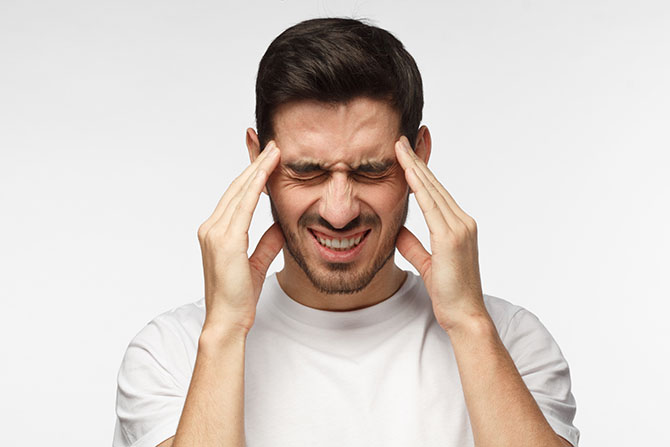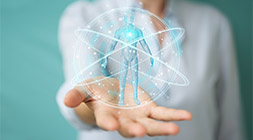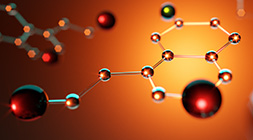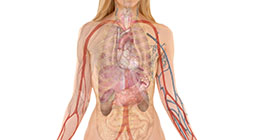
Overview
Symptoms
Causes
Prescription
Health Tips
No other health condition comes in a greater variety than the headache. There are over 150 types of headaches defined by the International Classification of Headache Disorders, with two main categories, primary and secondary. Tension and migraine headaches are common types of primary headaches while another, cluster headaches, are rare. Primary headaches are responsible for about 90 percent of all headaches and can range from mild to excruciatingly debilitating.
Secondary headaches are due to other underlying health conditions, such as a sinus infection, head injury, jaw issues, hangovers, and viral or bacterial infections. Tension headaches are the most frequent, affecting 70 to 90 percent of the population at one time or another.
Migraines constitute less than 10 percent of headaches and affect 16 to 17 percent of the population, affecting women more than men. Cluster headaches are extremely painful and draining but fortunately are infrequent, affecting less than 1 percenet of the population. Men are three to six times more likely to be affected by cluster headaches.
Symptoms
Tension and migraine headaches may be episodic (fewer than 15 per month) or chronic (more than 15 per month). The variety of headache types have different symptoms:
Tension headache:
- Intermittent or constant pain that does not pulse
- Pain levels vary from mild to intense and last 30 minutes to a week
- Starts in one place and may spread over the rest of the head
- Tension felt on the front, sides, or back of the head
Migraine:
- Prodrome phase (before migraine) may occur 1 to 2 days beforehand and include digestive issues, irritability, feeling hyper or fatigued
- May begin with seeing an “aura”, blurred vision/spots, feeling numbness, or a disturbance in cognitive function, all consequences of vascular constriction
- Nausea, dizziness, vomiting, and diarrhea
- Pain lasting 4 to 72 hours
- Sensitivity to light and noise
- Throbbing pain in and around the eye or temple, and occurs only on one side of the head
- Weakness may occur after migraine (postdrome phase), along with confusion and fatigue
Cluster headache:
- Drooping eyelid
- Eye redness and watering
- Restlessness; feeling the need to move, pace, or rock
- Runny nose and watery eyes are common symptoms
- Sudden, excruciating pain around one eye that may radiate
- Swelling around the eye
- The occurrences:
- May be chronic: attacks with a remission of less than 1 month, or no remission at all
- May be episodic: a period of attacks lasting from a week to a year, with remission periods lasting from a month to a year or longer
- May last 15 minutes to 3 hours
- Often coincide with seasonal changes
- Usually happen at the same time each day, or every other day, up to 8 times a day
Causes
Primary headaches are caused when nerves, blood vessels, and muscles in the head and neck become overactive and trigger pain signals in the brain. It is not totally understood what sets this in motion, but some of the triggers mentioned below for secondary headaches also occur in primary headaches, and with chemical imbalances in the brain. Tension, migraine and cluster headaches are all thought to have a genetic component. For women with migraine headaches, hormonal changes may be a contributing factor.
Secondary headaches can be brought on by any one or a combination of these triggers:
- Alcohol
- Anxiety
- Blood clots
- Caffeine withdrawal
- Changes in air pressure, or weather changes
- Constipation
- Dehydration
- Dental problems
- Depression
- Eye strain
- Hypertension
- Hypoglycemia
- Magnesium deficiency
- Overexertion
- Poor posture or a misalignment in the vertebrae
- Sinus problems
- Skipping meals
- Smoking
- Stress
- Stroke
Other causes are due to food and environmental sensitivities, such as to nitrites, lactose, caffeine, aspartame, copper, and vasoactive tyramines that are found in certain foods.
Secondary headaches may be a sign of a serious health issue and should not be ignored. If a headache is much more severe than any previous headache, or is accompanied by other symptoms, such as fever, neck pain/stiffness, or confusion, then one should seek medical attention.
Prescription for Health
Diet
For some people, headaches and migraines are triggered by certain foods. Food triggers vary from person to person, therefore keeping a food diary and noting when migraines or headaches occur after eating may help to pinpoint potential triggers. Some examples of common food allergens that may cause headaches (and more) are chocolate, milk/cheese, yeast, coffee, wheat/gluten, shellfish, citrus fruit, wine, bananas, sausages, chicken liver, pork, and beef. Commercially prepared luncheon meats, hot dogs, bacon, and deli meats, dried fruit, and most processed and packaged foods may include many additives, preservatives, flavourings, added colours, emulsifiers, surfactants, and a variety of other excipients that may compound a food sensitivity. If a food allergy is suspected to be causing headaches, request an allergy test.
Too much coffee (more than two or three cups daily) can initiate headaches. However, caffeine can also stop headaches, even migraines. Dr. Julian Whitaker, author of Health & Healing, recommends that coffee lovers have only one cup of coffee per day to keep headaches at bay. If one drinks too much coffee, cut back, or if caffeine-sensitive, eliminate it altogether. Coffee is not recommended for those with osteoporosis, rheumatoid arthritis, atherosclerosis, infertility, urinary incontinence, or if pregnant.
Supplements
| Nutrient | Dosage | Action |
|---|---|---|
| Butterbur (petasites hybridus) | 50 mg twice a day | Migraines attacks were reduced by over 60 percent with 12 weeks of treatment. |
| Feverfew | 250 mcg of parthenolides taken daily equal to 125 mg of dried feverfew | Alleviates pain, nausea, and vomiting associated with migraine.
Reduction in recurring headache and migraine should be noted in four weeks. |
| Magnesium bisglycinate or threonate | 200-400 mg daily | Reduces the pain of migraines and frequency of headaches. |
| 5-HTP | 100 mg twice daily | Protects against medication-induced headaches |
| Omega-3 | Three 500 mg capsules three times daily for several weeks | Research showed a reduction in frequency and intensity of migraine headaches over a six-week period. |
| Coenzyme fully reacted B-complex: | Look for a minimum of the following per daily dose:
B1 – 100mg B2 – 7.5 mg Niacin – 353 mg B5 – 300 mg B6 – 100 mg B12 – 1000 mcg Folate – 1000 mcg |
Improves mood, reduces anxiety and stress; aids hormonal balance. B vitamins in their active coenzyme form are absorbed directly. |
| Ginger | 500 mg every four hours | Relieves headaches and nausea associated with migraines |
Health Tips to Enhance Healing
- Alternative treatments, such as chiropractic, massage, reflexology and acupuncture may be very beneficial in alleviating headache pain.
- Avoid constipation
- Chiropractic treatments may correct misaligned bones that cause headaches. Cranial sacral therapists can also help realign bones of the skull.
- Do not take pain medications regularly. They only mask the problem and can worsen the situation over time. Find out the root cause for the headaches to prevent them.
- Drink plenty of pure, filtered water daily. Dehydration can cause headaches and migraines
- Eat natural, whole foods, preferably organic.
- Eat small meals often to prevent hypoglycemia.
- Eliminate all aspartame-containing products, especially soda pop.
- Eliminate foods containing tyramine, such as chocolate, aged cheeses, red wine, and fermented foods.
- Ensure proper lighting to avoid eye strain.
- Get a thyroid test. Hypothyroidism may be related to migraines.
- Get tested for food and environmental allergies.
- Have dental amalgams removed and replaced with non-toxic fillings. Headaches have been associated with mercury toxicity.
- Reduce stress. Practice stress reduction techniques at home, in the office, or in the car on the way home. (See Adrenal Fatigue)
- While suffering from a migraine, eliminate noise and light. Apply cold compresses and use local pressure to reduce pain










